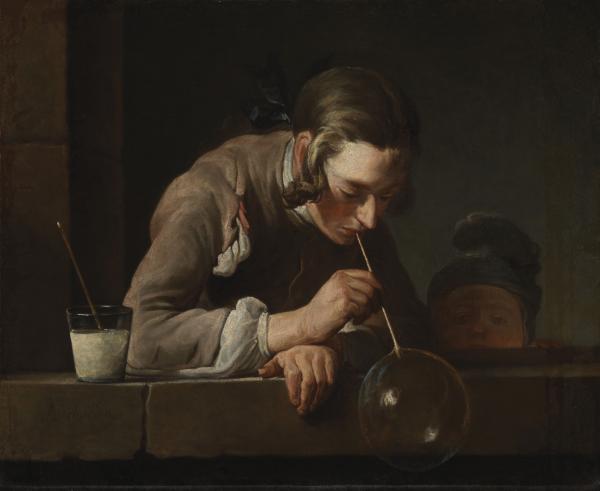Jean-Baptiste-Siméon Chardin’s work gained public attention just as a reaction to the elaborate style of rococo art was setting in. He was admitted to the French Royal Academy as a still-life painter in 1728, a rare honor, as still life was then considered far less valid than paintings of historical, mythological, or courtly subjects. Even though his work reflected the ordinary images, decorum, and morality of the bourgeois life from which he came, Chardin’s talent was recognized in artistic and aristocratic circles. Chardin began to paint genre subjects in the late 1730s, evoking through his observation of everyday life a contemplative atmosphere that in France had largely remained the domain of religious painting. In some ways his compositions heralded the values of the art of the Enlightenment, with its emphasis on rational content, naturalistic imagery, and qualities of truth and directness in subject matter.
Soap Bubbles is carefully composed in the simplest of geometries, with the window forming a rectangular space to frame the pyramidal grouping of the youth and the boy transfixed by the spherical bubble; these shapes are reinforced by the masonry, the angles of the youth’s arms, and the pair of heads. Chardin renders surfaces carefully but without distracting detail. A sense of timeless contemplation transforms the ephemeral pastime of the pair into a compelling allegory about the transitory nature of life. This is far from being a scene of carefree, youthful abandon.



